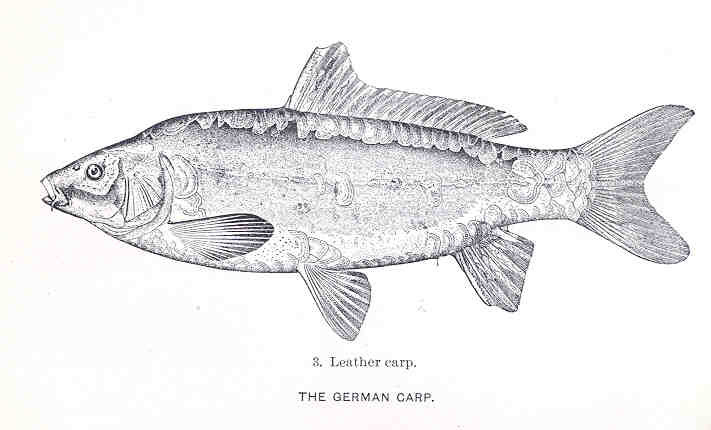Have you ever noticed that some carp are nearly impossible to catch? What makes one carp easier to catch than another? Searching to answer this question, I came upon a handful of scientific studies that discussed some of the issues involved. Of course, there are many factors such as the amount of fishing pressure, what the fish are naturally feeding on, location in the water body, and many, many other things that can impact fishing. However, I became interested in one that is less talked about: genetics. Carp have been domesticated for a long time and the result is many different “strains”, much like breeds of dogs or any other domesticated animal. And just like dog breeds these strains have different characteristics that impact everything from appearance to growth rate. While this selective breeding was not with angling in mind, the outcome of it is of major interest to anglers—and not just if the fish is a common or mirror, or how big it can ultimately get. It turns out that this selective breeding also has an impact on how easy the fish are to catch. This is isn’t just a minor difference either, as studies have shown that some strains of carp are much harder to catch than others. Most of these comparisons were between wild type carp (common) and more domesticated mirror carp. Mirror carp have been bred for two things: few scales (obviously) and a high growth rate. These traits were useful in the production of carp for food and set these fish apart from their wild brethren. In order to achieve a higher growth rate these fish have to eat more, which in turn naturally makes them easier to catch as a fish that eats more has more chance of getting a hook in the process.
There is also a difference in what the strains prefer to eat. Both have been shown to prefer to eat sweet corn over pellets (even when raised on pellets) which is likely a combination of the bright color but even more importantly the sugar content of sweet corn (the fish prefer to eat candy). But in another study the wild type carp preferred worms over other food types which can go a long way to explaining why there are many waters in the USA (and possibly other places) where often the biggest carp out of a lake was caught by someone who was not fishing for carp at all but rather by someone fishing for sunfish or catfish – using worms. Iain Sorrel has an article on “Alternative Approaches” that discusses this very topic.
But back to the impact of genetics. Studies have also found that even with the easier to catch domesticated strains there is a relatively high percentage of fish that were never caught at all in experimental ponds. For mirror carp this was about 45% of fish never being caught, and for the wild type this number was 68%! That means that 68% of the fish in a small pond could not be caught in 20 days of fishing. Keep in mind these were fish that had been raised in a hatchery and were used to eating pellets and had never been fished for before. Now think about the fish that you are fishing for and it makes you wonder how you ever catch anything!
The impact of angling pressure was similar for both strains as they become harder to catch the more they are fished for. This means that the carp get better at not getting hooked – which is no surprise to anglers on heavily fished waters. Even if you can see the fish feeding over your baited area it doesn’t mean that you will catch any: a study using tagged fish showed that even when fish are feeding directly where angler’s baits were located, it made little difference on whether certain fish were caught. The interesting thing is that it has been found that the carp kept feeding similarly but more slowly and with more inspection of the food. Not only did they use sight, though, the carp were likely able to detect the rig by feel as well.
Added to all of the above are individual differences between carp in the same lake, from food preference to handling of that food. This also makes some easier to catch than others. Feeling overwhelmed? Some take home messages for carp anglers include this advice: keep your rigs concealed. The fish can and will learn to avoid the rigs. This is not “smart” so much as the same conditioning they use to avoid other predators. Try alternative baits. There are potentially a lot of “wild” fish out there that are never caught because they prefer to eat wild food. Make sure your hooks are sharp. When the carp can feel the rig, you’ve got a much better chance of hooking them before they reject it if you aren’t making it easy for them with a dull hook!

